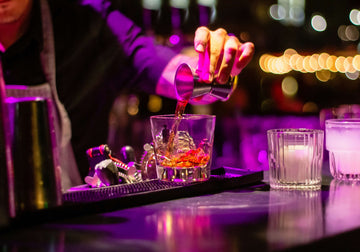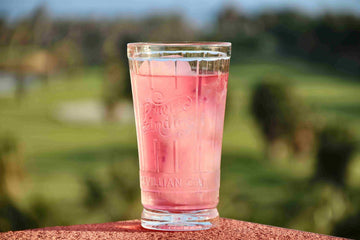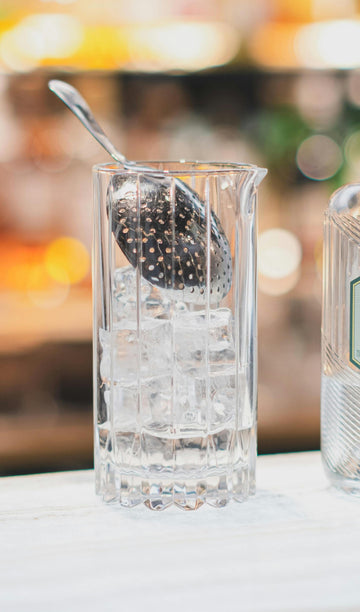What is Gin Made From & How is it Distilled?
by William Rusling on Feb 29, 2024
Ever wondered what goes into making your favourite gin or how it gets its unique flavour? You're in the right place. We'll break down the basics of gin ingredients and the distillation process, making it easy and fun to understand. Let’s dive right in!
What Exactly is Gin?
Gin is a distilled alcoholic beverage that derives its predominant flavour from juniper berries. It belongs to the broader category of spirits known as botanical spirits or flavoured spirits.
What Is Gin Made From?
Gin is typically made from a base spirit, often grain alcohol, that is infused with botanicals. The key botanical in gin is juniper berries, providing the distinctive piney taste. Other botanicals like coriander, citrus peel, and various herbs may also be added during the distillation process to enhance the flavour profile. You can learn more about how gin is made on a distillery tour, like the one offered by Filey Distillery.
How is Gin Made?
Gin making is a fascinating blend of science and artistry, transforming simple ingredients into a complex and flavorful spirit. Here's a quick overview of the steps we'll dive into:
- Selecting the base spirit
- Distillation process
- Infusion of botanicals
- Blending and Fine-Tuning
- Dilution and Bottling
- Ageing (Optional)
Selecting the Base Spirit
The base spirit in gin making is like a blank canvas. It's a neutral alcohol, typically made from grains like wheat, barley, or corn, distilled to be flavourless. This neutrality lets the real stars, the juniper berries and other botanicals, impart their flavours without competition.
The quality of this spirit is key—it's distilled several times to ensure purity and smoothness. Some modern gins experiment with different bases like grape or sugarcane, but grain remains the classic choice. It's all about starting with a clean, high-quality foundation to build the unique flavours of gin.
Gin Distillation
Gin can be distilled using various methods, each contributing to its unique character. Some common methods include the 'steep and boil' method, vapour infusion, individual botanical distillation, and vacuum gin distillation.
'Steep & boil' method of gin distillation
The 'steep and boil' method is a traditional approach to gin production. In this process, a mixture of botanicals, including juniper berries and other selected herbs and spices, is steeped in the base spirit. The steeping allows the alcohol to absorb the flavours and aromas of the botanicals.
Subsequently, the mixture is heated or boiled to release the essential oils and flavours from the botanicals. The resulting vapours, enriched with the botanical essences, are then condensed back into liquid form to create the final gin product. This method often imparts a robust and well-rounded flavour profile to the gin.
'Vapour infusion' method of gin distillation
The 'vapour infusion' method is a popular contemporary technique in gin distillation. In this process, the botanicals are placed in a separate basket above the base spirit in the still. As the base spirit is heated, the vapours rise through the basket, allowing them to interact with the botanicals.
This vapour carries the botanical flavours and aromas along with it. The botanical-infused vapours are then condensed back into liquid form, resulting in a gin with a more delicate and nuanced flavour profile. This method is celebrated for its ability to highlight specific botanical characteristics.
Individual botanical distillation
For gins employing the individual botanical distillation method, each botanical is distilled separately before being blended together. This meticulous approach provides distillers with precise control over the intensity and characteristics of each botanical.
By distilling each element individually, they can extract the pure essence of each botanical without interference from others. The final blend is then carefully crafted, resulting in a gin with a precisely curated and balanced flavour profile, showcasing the distinct qualities of each botanical.
Vacuum gin distillation
Vacuum gin distillation takes place under reduced atmospheric pressure, allowing the process to occur at lower temperatures than traditional methods. This gentle approach helps preserve the delicate and volatile compounds in the botanicals, leading to a gin with a more intricate and nuanced flavour profile.
The vacuum distillation process is known for producing gins that showcase subtle botanical notes and unique characteristics, making it a method favoured by distillers seeking to create distinctive and refined gin offerings.
Infusion of Botanicals
After distillation, the real character of gin is shaped during the infusion of botanicals. This is where gin gets its unique flavour profile. The star is always the juniper berry, giving gin its distinctive, pine-like taste. But it doesn’t stop there. A variety of other botanicals like coriander, citrus peels, angelica root, and even exotic spices are added to create a complex flavour.
The infusion process varies. In some methods, botanicals are steeped directly in the spirit, like making a tea, allowing the alcohol to extract flavours over time. In other methods, like vapour infusion, botanicals are placed in a basket where hot alcohol vapours pass through, picking up delicate flavours without direct contact.
Each gin producer has their own secret blend of botanicals and infusion process, making each gin brand unique. The choice and balance of botanicals, along with the infusion technique, define the gin’s final taste, aroma, and quality.
Blending and Fine-Tuning
Once the infusion process is complete, the next step in gin making is blending and fine-tuning. This is where distillers adjust the flavour to achieve a balanced and refined final product.
It involves mixing different distillates or adding extra botanicals to perfect the gin's profile. Distillers taste and tweak their concoctions, ensuring that each element is harmoniously blended. This stage is crucial for crafting the signature taste of each gin brand, showcasing the skill and artistry of the distiller.
Dilution and Bottling
The final step in gin production is dilution and bottling. After distillation and flavouring, the gin often has a high alcohol content, so it’s diluted with water to achieve the desired strength, typically around 40% alcohol by volume.
This dilution is key to ensuring the gin is smooth and palatable. Finally, the gin is bottled, labelled, and ready to be distributed. This stage marks the transformation of the carefully crafted spirit into a product that gin lovers can enjoy. Why not try a bottle of Filey Distillery’s signature gin.
Ageing (Optional)
While not a standard step for most gins, some varieties undergo an ageing process, which can impart additional depth and complexity to the flavour. This optional step involves storing the gin in barrels, typically previously used for whiskey or wine, allowing it to absorb subtle woody notes and a smoother finish. The ageing period can vary from a few months to several years, depending on the desired outcome. Aged gins often have a more rounded, mellow character, distinguishing them from the typical crisp and fresh profile of classic gins.
Is it true you can make gin from vodka?
Gin can be made from vodka through a process called redistillation. During this process, botanicals, especially juniper berries, are added to the vodka, and the mixture is distilled again to infuse the spirit with the flavours and aromas characteristic of gin. This method provides a quicker way to produce gin, often referred to as compound gin, compared to traditional distillation from a base spirit.
What does gin taste of?
Gin's taste is characterised by the presence of juniper berries, which impart a piney and resinous flavour. Beyond juniper, the taste can vary widely depending on the botanicals used in the distillation process. Common botanicals include coriander, citrus peel, angelica root, and various herbs, contributing to a spectrum of flavours ranging from citrusy and floral to spicy and herbal
What are the different types of traditional gin?
Traditional gin can be categorised into several types based on their flavour profiles and production methods. Some common types include London Dry Gin, known for its dry and juniper-forward taste; Plymouth Gin, with a slightly sweeter and earthier profile; Old Tom Gin, a sweeter style often used in classic cocktails; and Genever, a Dutch variety with a maltier and more pronounced grain flavour. Each type offers a distinct gin-drinking experience.
Conclusion
And there you have it— gin demystified! From the careful selection of botanicals to the precise distillation process, making gin is an art that combines tradition with creativity. Next time you enjoy a gin cocktail, you'll know exactly what's in your glass and the journey it took to get there. Cheers to that!
Learn More About the Gin Distillation Process on a Distillery Tour
Interested in seeing how gin comes to life? Join us at Filey Distillery for an exclusive distillery tour! It's your chance to dive deeper into the gin distillation process, from the initial selection of botanicals to the final bottling. Not only will you get a behind-the-scenes look at how we craft our unique gin, but you'll also have the opportunity to sample some of Filey Distillery's finest creations. Don't miss out on this flavorful journey— book today and experience firsthand the art and science of gin making.
FAQs
What is the Base Ingredient in Gin?
Gin's foundational element is typically a neutral spirit, often obtained from grains such as barley, corn, rye, or wheat. This neutral spirit acts as a blank canvas where the distinct botanical flavours, notably those from juniper berries, are introduced through the distillation process.
Is Gin Just Flavoured Vodka?
While both gin and vodka start with a neutral spirit, they undergo different processes. Gin involves the infusion or distillation of botanicals, particularly juniper berries, giving it a distinct flavour profile. Vodka, on the other hand, is usually a neutral spirit without additional flavourings. So, while gin and vodka share a common base, the presence of botanicals makes gin a uniquely flavoured spirit
Is All Gin Made from Potatoes?
No, not all gin is made from potatoes. The base ingredient for gin is typically a neutral spirit, and this can be derived from various sources, including grains like barley, corn, rye, or wheat. Potatoes are commonly associated with the production of vodka rather than gin. The choice of base ingredient depends on the distiller's preferences and the desired characteristics of the final product.



